How to Prepare Stinging Nettle for Safe Eating
Learn how to prepare stinging nettle for safe eating. In just a few steps you can enjoy all the benefits and flavor of nettle.
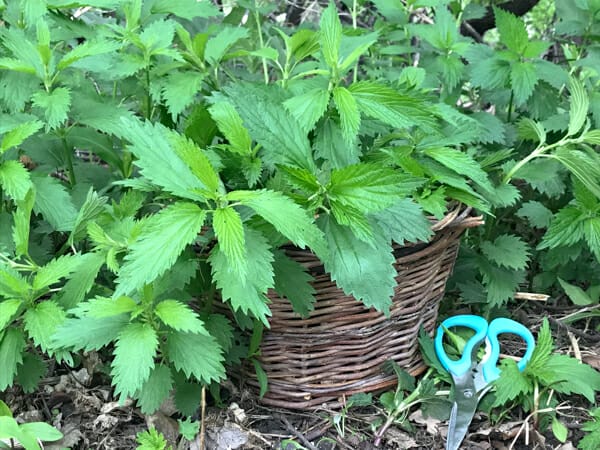
Also Read: How to Harvest Stinging Nettle, How to Dry Stinging Nettle, How to Freeze Stinging Nettle
What Parts of Stinging Nettle Can You Eat?
For being so prickly, stinging nettle offers a surprising assortment of food! People pick the roots, seeds, stems, young shoots and leaves of stinging nettle for food or medicinal use. Tall, mature plants can even be harvested for their long fibres which are ideal for making textiles or ropes.
In this post, I focus on using the leaves and young, tender stems. These are a great place to start as they are easy to identify, harvest and prepare. And preparation is key because you should not eat stinging nettle raw. I repeat, do not eat raw, unprepared stinging nettle.
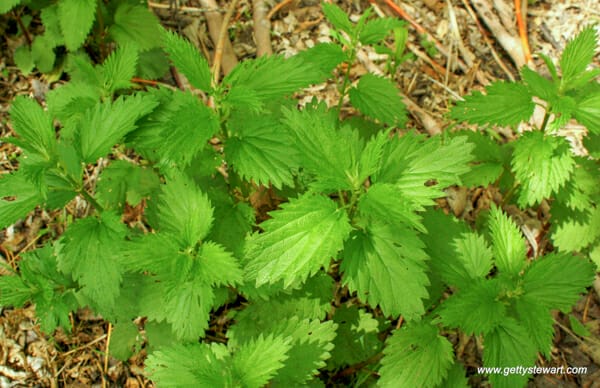
How Do You Prepare Stinging Nettle to Eat?
There are two ways to neutralize the sting of nettle.
1. Dry It
When you thoroughly dry or dehydrate stinging nettle it loses its sting.
I use dried stinging nettle for making tea. It can also be turned into powder to add to smoothies, soups, desserts or other dishes where a nutrient rich dark green look is desirable.
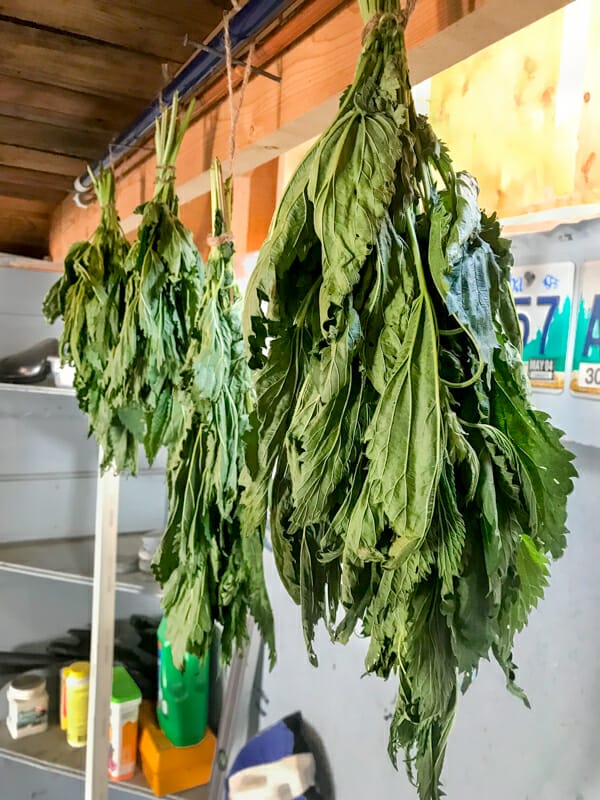
2. Cook It – Steam, Sauté or Boil
Cooking nettle in any way will disarm the sting.
You can steam it, boil it, blanch it or sauté it on its own to freeze or to prep for recipes like Nettle Pesto, Nettle Cheese Biscuits or Nettle Stuffed Manicotti.
You can also add it directly into a recipe where it will get steamed, boiled or sautéed (eg. stirfry or soup) along with other ingredients. For example Stinging Nettle Soup, Creamy Chicken and Nettle Pasta or Garlic Sauteed Nettle.
My favorite way to prepare stinging nettle is to pan blanch it as I demonstrate in this video. The written instructions are below.

Steps to Pan Blanching Stinging Nettle
- With gloves on, wash stinging nettle by swishing in bowl or sink full of cold water.
- Pat dry by rolling in an absorbent towel.
- Remove leaves and top shoot from stem. Compost stems or dry and use in tea. Side note – nettle stems and leaves are a great addition to compost!
- Heat a large pan over medium high heat.
- Add enough water (2-4 Tbsp) to just cover the bottom of the pan.
- Immediately add a handful (2 cups) of nettle leaves to the hot pan. The nettle will shrink and cook right away.
- Stir the nettle so that all the leaves and stem are visibly cooked and have turned a lovely deep green color, about 3-4 minutes.
- Remove from pan and squeeze out any water. Repeat with any remaining nettle.
- Your nettle is now ready to freeze or safely use in various recipes.
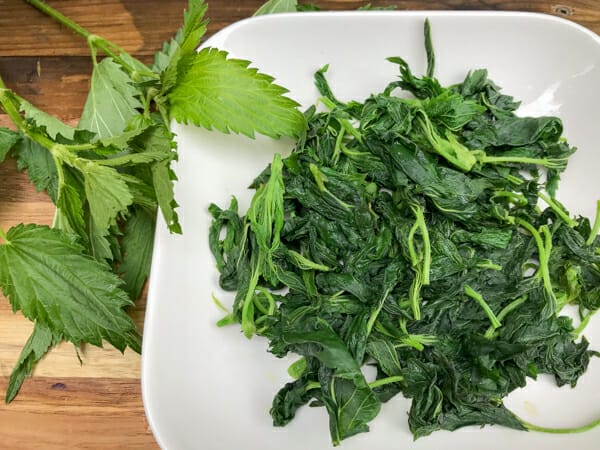
What does Cooked Stinging Nettle Taste Like?
In most recipes, I think the majority of people would not be able to recognize a taste difference between stinging nettle or spinach. In fact, I often replace spinach with stinging nettle in cooked dishes like fritatta, pizza, soups, stews and curries and no one bats an eye.
When you eat cooked stinging nettle straight up or as a sided dish sauteed in garlic, the taste is much more noticeable. It tastes like a dark leafy green – a little more intense than sauteed spinach but without any of the bitterness of kale or collard greens.
Sometimes, only occasionally, when I eat it straight up or drink it as fresh tea, I get the scent or flavor of salmon. I’m not sure why – maybe it’s the high level of protein or chlorophyll. I’ve never experienced this flavor when I use stinging nettle in a recipe or when I combine the dried leaves in an herbal tea blend. I’d love if someone could explain this phenomenon to me!
What are the Medicinal Uses of Stinging Nettle?
Personally, I enjoy stinging nettle for pleasure only. I appreciate its nutritional properties, but I do not use it in prescribed amounts for any specific medicinal purposes. If you’re interested in using stinging nettle or any other plant for medicinal purposes, I strongly encourage you to consult credible, trusted sources before doing so.
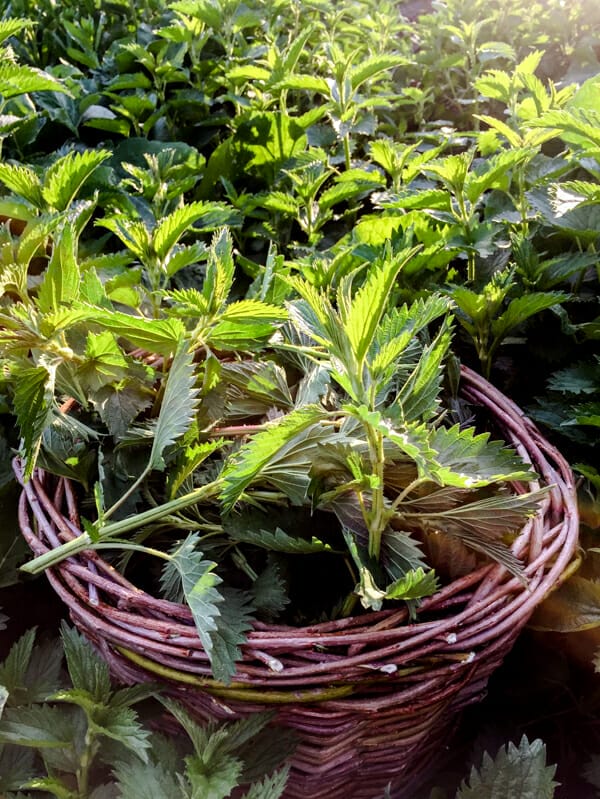
With that said, stinging nettle is one of the most well researched wild edibles and has been used for medicinal purposes since ancient Greek times. The University of Maryland Medical Center says “Stinging nettle has been used for hundreds of years to treat painful muscles and joints, eczema, arthritis, gout, and anemia. Today, many people use it to treat urinary problems during the early stages of an enlarged prostate (called benign prostatic hyperplasia or BPH), for urinary tract infections, for hay fever (allergic rhinitis), or in compresses or creams for treating joint pain, sprains and strains, tendonitis, and insect bites.”
I’m excited about this year’s stinging nettle harvest and plan to expand my list of nettle recipes. Do you think you’ll try stinging nettles this year? Do you have a favorite recipe? Leave a comment below or reach me on Instagram @getgettys or Facebook @GettyStewart.HomeEconomist.
Getty Stewart is a Professional Home Economist, speaker, frequent media guest and writer dedicated to putting good food on tables and agendas. She is the author of several recipe books on enjoying and preserving fruit, Founder of Fruit Share, a mom and veggie gardener.
Sign up to get articles by Getty delivered to your inbox. You’ll get recipes, practical tips and great food information like this.
Updated from the original post from May 2015.


Just this morning I noticed that stinging nettle has popped up . I usually dig it all up ( south Texas area) because it stings and horses, dogs, kids are around it. After reading your article, I will try it this year.
Oh I hope you and your family enjoy eating it – turn that stinging beast into something good!
Hi!
Thank you for the great article. Question – when drying the nettle, do the hairs remain or do they fall off?
Also, I’ve read that the root of the nettle is good for cancer patients which I am. Thoughts?
Thank you,
Cathy
Hi
Some of the hairs remain, some break, some fall off – but they no longer sting, you may just feel the occasional sharp hair. I do not use gloves when handling the dried nettle, they’re really not an issue.
As for nettle root, I don’t have enough knowledge to share information about medicinal properties of plants. That said, burdock root would be another plant to investigate.
All the best,
Getty